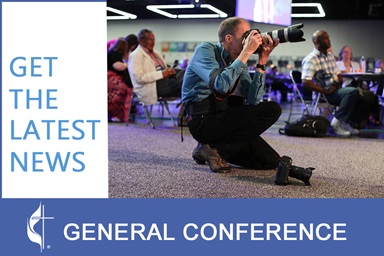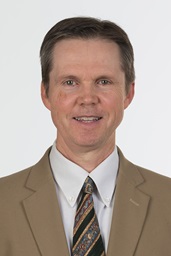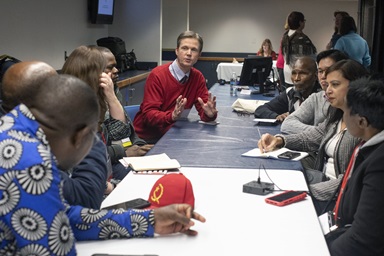When 62 deadly tornadoes spanned Alabama in 2011, United Methodists there were unprepared to deal with a disaster of that magnitude.
Three years later, when another round of tornadoes struck the state, church members were so well organized that a trained “chainsaw” cleanup crew was dispatched to the Birmingham area to pick up debris.
Among the lessons learned is that regular training is important, “not only to know what to do but also to know what not to do,” said the Rev. Randy Burbank, disaster response coordinator for the church’s North Alabama Conference.
As the United Methodist Committee on Relief celebrates its 75th anniversary this year, the focus on formal training for church members responding to disasters has increased, most notably over the past decade, including occasional training sessions outside the U.S.
Greg Forrester, who oversees U.S. disaster response for UMCOR, calls it “the Katrina effect.”
UMCOR's 75th anniversary
The Methodist Committee for Overseas Relief was founded in 1940 during World War II as the forerunner of the present-day United Methodist Committee on Relief. Bishop Herbert Welch, who is credited with its founding, made the public case for faith-based relief agencies.
Find resources to celebrate UMCOR’s 75th anniversary and learn more about the relief agency’s history.
Donate on Sunday, March 15, to One Great Hour of Sharing, which supports UMCOR’s administrative costs.
The impact of Katrina — the most destructive of the five storms reaching Category 4 or 5 strength during the 2005 Atlantic hurricane season — “was the largest volunteer response, domestically, that I think any organization has had,” Forrester said.
What quickly became obvious, he added, was the need to control the flow of volunteers into the disaster area. UMCOR developed early response training for volunteers for all five U.S. jurisdictions of the denomination.
Another part of the Katrina effect, said the Rev. Tom Hazelwood, who led UMCOR’s U.S. disaster response from 1998 to 2013, is the expectation by government entities “that United Methodists or faith communities will respond.” The recognition of faith-based volunteers as legitimate responders, he added, “demands that our volunteers have better training and be better prepared.”
Katrina Aid Today, a consortium of nine faith-based and voluntary organizations led by UMCOR, was the result. “That was, and still remains today, the largest single government-managed grant to the private sector for response,” Hazelwood said.
It’s all about being prepared
To provide a continuity of leadership, each of the church’s 56 U.S. conferences have both a disaster response coordinator and a Volunteers in Mission coordinator who are cross-trained in their responsibilities, Forrester said.
This emphasis is what allows UMCOR to be more than just a funding mechanism. By equipping conferences and working on training, “we’re then able to put together a comprehensive response,” he added. “Without it, the response would be minimal.”
In Alabama, hard lessons learned in 2011 about the management of volunteers and material donations paid off during the 2014 tornado outbreak, Burbank said. Untrained or unaffiliated volunteers may “show up with the best intentions… but they don’t understand the protocols, the procedures we have to follow.”
Churches have learned to pool resources and connect with Voluntary Organizations Active in Disasters and community groups spearheading relief efforts. But challenges remain as local congregations are encouraged to create their own disaster plans.
“When the disaster happens in your town, you own the disaster,” stressed Burbank, who also serves as pastor of First United Methodist Church in Sheffield.
North Alabama received $2.15 million from UMCOR for the 2011 tornado response, which wrapped up in July 2014. The 2014 response is ongoing as the conference looks at lower-income areas affected by the tornadoes. An additional UMCOR grant allowed North Alabama to be more proactive by installing above-ground storm shelters for some tornado survivors. United Methodists also are working collaboratively to erect a 475-person community storm shelter in Harvest.
‘Always ways to be the church’
Local congregations should not be reluctant to respond to a disaster, Forrester said, even if they haven’t had training. “There are always ways to be the church,” he pointed out.
Members of First United Methodist Church in Louisville, Mississippi, found that out on April 28, 2014, after a tornado ripped through the town and Winston County, destroying hundreds of homes and the local hospital.
Training Opportunities
During the first few weeks or months after a disaster, only specially trained Early Response Teams can enter the area, due to health concerns and infrastructure limitations. Learn more about training programs.
When the area is ready for teams of volunteers, the schedules are coordinated through United Methodist Volunteers in Mission.
The Connecting Neighbors Leadership Training Program, developed by UMCOR, is a two-day, local church-readiness, train-the-trainer program designed to give volunteer trainers the tools and information they need to guide the development of local church disaster-response ministries.
Almost immediately, the church building “became a hub” for the community’s response, said Mellie Jordan, who eventually became a case manager for the tornado response. Her father, the Rev. Mike Childs, is the church’s pastor.
Church members helped bring in residents evacuating from a nursing home damaged by the tornado and received others, bused in by the Red Cross, who were soaking wet or even injured. Soup and frozen pizza, collected for a food outreach program, were heated up for those taking shelter.
Later, meals were delivered from the church kitchen to volunteers on cleanup duty. Older women washed and folded the dirty clothes of tornado survivors. “Everybody had something they could do and everybody was willing to do it,” Jordan said. “I was really, really proud of our church.”
Kathy Earl, an executive for UMCOR disaster response, came in and trained Jordan and four others, who started case management in late May for those impacted by the tornado. An organized community response became known as Winston Strong. And after a tornado hit Columbia, Mississippi, on Dec. 23, Jordan and several others from Winston County became advisors about the steps needed to develop a long-term recovery committee.
“Their recovery is going to be a lot easier because we did go down and share and kind of pay that forward,” Jordan said.
Building from the ground up
In the Alabama-West Florida Conference, “our model has always been local, trained volunteers first,” says Amelia Fletcher, the conference’s disaster coordinator for the past 10 years.
But when the Pensacola, Florida, area received 24 inches of rain in 24 hours April 29-30, 2014, overwhelming the drainage system, there was no core emergency response leadership in place to deal with the flooding.
“I was kind of building from the ground up, but had two key churches in Pensacola and Gulf Breeze who opened up and became functional,” she explained. “A lot of what I did at that time was kind of coaching and helping them understand the organization that needed to be in place.”
Her advice for disaster response:
- Educate and train at all levels, then establish a pyramid of contact people to provide answers and directions when disaster strikes.
- Be a community partner, networking with other faith groups, nonprofits and government groups.
- Establish disaster response plans and review them on a regular basis.
- Empower the local church, using effective tools like “Connecting Neighbors.”
And, Fletcher noted, don’t count anyone out. “Everybody has a way to serve,” she pointed out. “We sometimes have to help them think outside their box.”
During the flood situation, one of the smallest churches in the district became the intake center for volunteers. An 80-year-old retired administrative secretary gave Fletcher daily reports of the activity. “She was so excited to be part of that,” she recalled. “She sat in that church and counted every volunteer, every meal and who served them. It was such a gift.”
Bloom is a United Methodist News Service multimedia reporter based in New York. Follow her at https://twitter.com/umcscribe or contact her at (646) 369-3759 or [email protected]
Like what you're reading? Support the ministry of UM News! Your support ensures the latest denominational news, dynamic stories and informative articles will continue to connect our global community. Make a tax-deductible donation at ResourceUMC.org/GiveUMCom.







